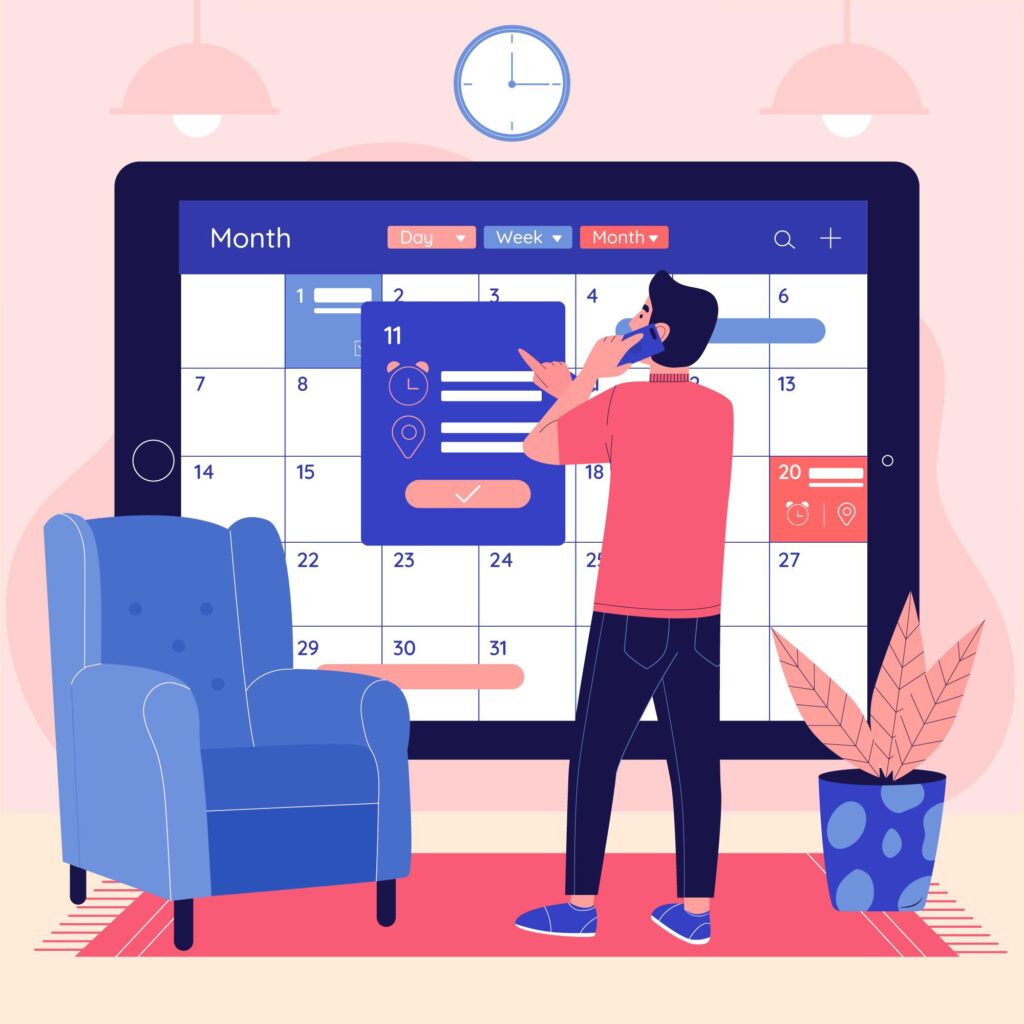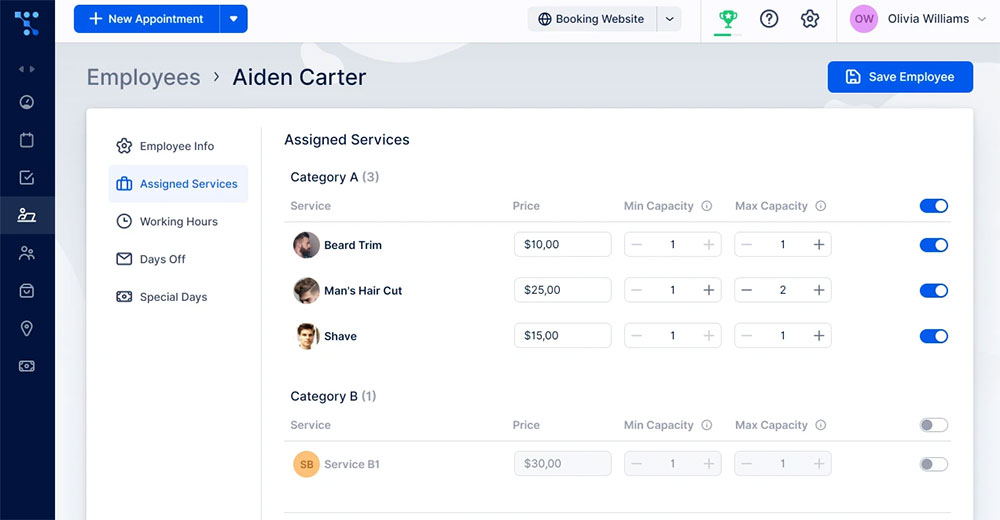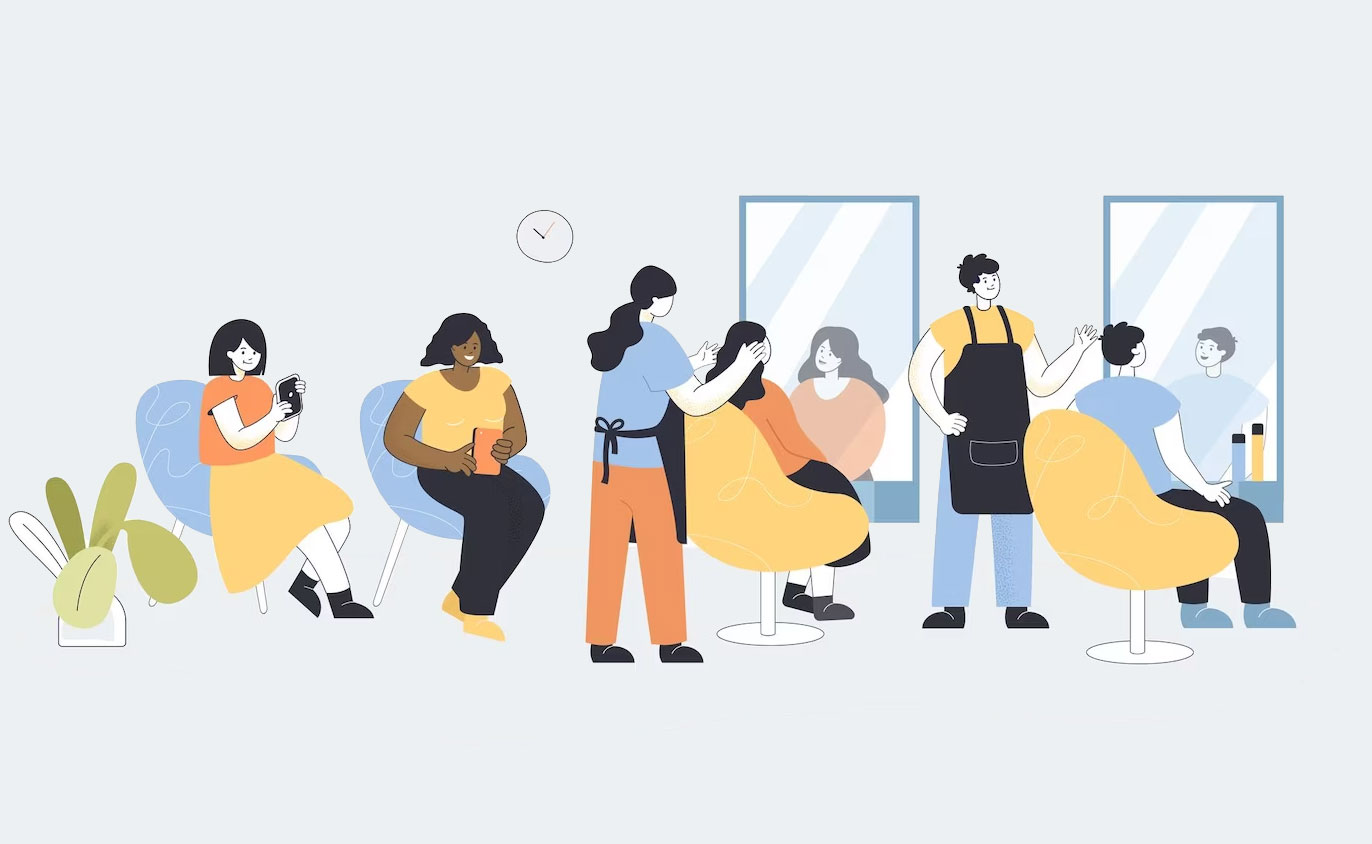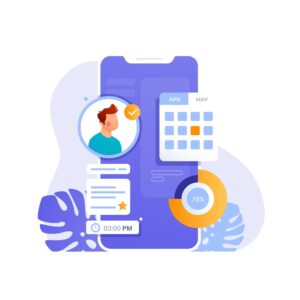As our lives become increasingly busy and time is one of the most valuable resources we have, the need for efficient and effective appointment scheduling methods becomes more apparent. For owners who run appointment-based businesses, whether it’s a salon, healthcare institution, or any other service-based business, one of the biggest challenges is how to manage time effectively.
Understanding different types of appointments and scheduling methods will significantly help you improve productivity and organizational skills. To help you achieve that, we’ve covered the 11 most common and efficient types of appointments to help you fill your calendar and maintain a healthy work-life balance.
11 Different Types of Appointment Scheduling
Depending on your business model and industry, you can choose different types of appointment scheduling to get the most out of your time and provide clients with the high-quality services they deserve.
- Time specified scheduling
- Walk-in appointments
- Same-day appointments
- Double bookings
- Recurring appointments
- Group bookings
- Appointment with dedicated buffer time
- Cluster scheduling
- Open-hour scheduling
- Stream scheduling
- Wave scheduling
Based on how you operate, one or more of these types of appointments will be the better fit for your business compared to others. We’ll help you assess your needs and processes to determine which one is best for you.
1. Time-specified scheduling
Time-specified scheduling is one of the most common and straightforward types of appointment booking. Customers book appointments for specific time slots, and each one of them gets a dedicated spot without any overlapping. Doctors, dentists, consultants, coaches, and similar professionals use this method of scheduling due to the nature of their business and because they usually have to give all their attention to one client at a time. For customers, this is a great approach to minimize waiting times, and service providers enjoy better time management.
2. Walk-in appointments
Walk-in appointments aren’t only for emergencies but are also great for businesses that can accommodate the sudden influx of clients without prior scheduling. As a type of appointment, walk-ins work on a first come first serve basis. They are popular in the healthcare industry because of medical emergencies and situations that demand immediate assistance. But barbershops, beauty and hair salons, spas, and similar industries can also take advantage of walk-ins and earn more revenue along the way. Walk-ins don’t have to disrupt a pre-planned schedule if you carefully implement them by calculating how many scheduled appointments you have vs. free time.

3. Same-day appointments
Same-day appointments basically provide almost instant solutions to immediate needs. Time is of the essence, and instead of walk-ins, many businesses allow clients to book an appointment for the same day. Compared to walk-in appointments, same-day appointments reduce waiting times and make sure customers get the services they want as soon as possible. Many customers prefer the “here and now” approach and don’t like to plan things in advance. By offering same-day appointments, you get an influx in revenue and enhance customer satisfaction as they don’t have to wait for days to schedule appointments. Before you implement this type of appointment, think about resource availability and whether your booking system can support it.
4. Double bookings
Double bookings (also known as overbooking) means that you schedule two or more clients in the same time slot. This scheduling method is great to minimize the effects of last-minute cancellations and no-shows. While intentionally utilizing double booking can be great, you should also have in mind the risks it poses. Handle double bookings carefully and only implement them after you’ve calculated the no-show rate in your business. If you implement this type of appointment into your business, you’ll maximize utilization of resources and revenue potential, while still catering to your clients' needs.
5. Recurring appointments
Recurring appointments are a lifesaver for businesses and customers who need regular and consistent services. As a scheduling method, recurring appointments allow customers to book appointments at fixed intervals, whether it’s daily, weekly, monthly, or in custom frequency. Various industries take advantage of this type of appointment scheduling such as healthcare, fitness, therapy, consultants, etc. E.g. a fitness trainer may schedule weekly training sessions for a client, or a dentist may set up bi-annual checkups for a patient. Recurring appointments are convenient and offer your business financial stability.
6. Group bookings

Image by Freepik
Designed to accommodate multiple individuals, group bookings are the perfect type of appointment for training sessions, workshops, seminars, and other group-oriented activities. They are not only cost-effective for clients, but also beneficial for service providers as they can cater to a group of customers in a shorter period of time. Organizing group appointments requires effective communication and streamlined booking processes to ensure a smooth and productive experience for everyone involved.
7. Appointment with dedicated buffer time
This type of appointment increases productivity and boosts performance by dividing appointments into two parts: sessions with a client followed by appointment buffer time. Buffer time in this scheduling method allows service providers to wrap up the previous appointment, take notes, unwind, and prepare for the next client. It’s particularly useful for professionals who deal with complex cases and require time for documentation, writing reports, taking notes, and relaxing before the next session. Punctuality is extremely important with this type of appointment and it ensures sessions don’t overlap which avoids stress for both client and provider.
8. Cluster scheduling
Grouping similar tasks or appointments together within a specific time frame is what cluster scheduling is all about. If you provide home services in a certain area, you should arrange appointments in nearby locations on the same day. Industries like therapy can utilize cluster scheduling by booking multiple counseling sessions back-to-back and taking advantage of grouping similar tasks together. It increases productivity and keeps your mind in the flow, requiring less time to do more meaningful work. Cluster scheduling optimizes resource utilization, reduces travel time, and allows service providers to have enhanced focus without constant context switching.
9. Open-hour scheduling
What is open-hour scheduling? It’s a type of scheduling method that offers a flexible and accessible solution for both businesses and their customers. This approach allows clients to visit during a designated timeframe rather than a fixed appointment. Many government and administration offices offer this type of appointment, rather than time-specific. It’s convenient for clients who have unpredictable schedules and prefer a first-come-first-served approach.
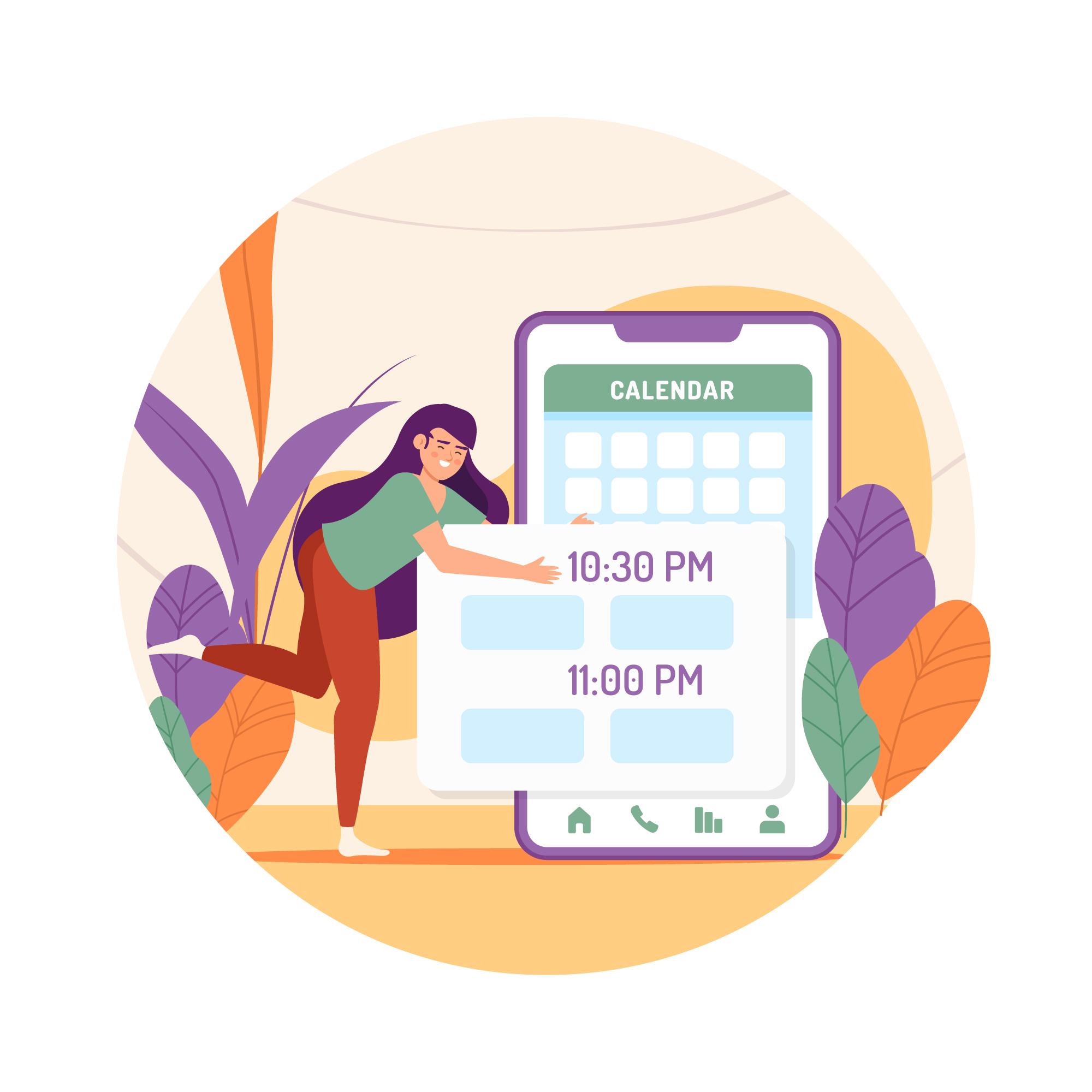
10. Stream scheduling
Businesses with extremely busy schedules take advantage of stream scheduling to allocate resources based on availability and capacity. But what is stream scheduling? It’s a type of appointment that serves clients as they arrive in sequential order instead of offering rigid time slots. Busy healthcare clinics are typically the ones to take this approach. It reduces waiting times and ensures efficient and high-quality services for all clients.
11. Wave scheduling
As the name suggests, wave scheduling is a type of appointment scheduling that divides the day into multiple time blocks or “waves”. Each of these waves is dedicated to specific appointment types of tasks. A hair salon may use the morning “wave” for haircuts and reserve the afternoon for hair coloring. If you manage different service requirements, wave scheduling can be a perfect fit for your business. It ensures specialized attention and optimizes employees’ schedules.
How to Choose The Best Types of Appointments for Your Business?
Choosing the best types of appointments for your business is crucial for maximizing efficiency, enhancing customer satisfaction, and achieving your revenue goals. Before you commit, consider these tips to make the right decision:
-
Evaluate your business needs
What’s your business model, services, and customer base? You have to identify the specific requirements of your industry and see which type of appointment is the right one for you. For example, a healthcare clinic can offer a mix of time-specified appointments and walk-ins to cater to emergencies. On the other hand, business consultants will benefit most from structured time slots to provide focused one-on-one sessions.
-
Analyze customer preferences
When you make business decisions, customer preferences are one of the most important factors. The same goes when you choose the scheduling method, because, at the end of the day, you want to have more bookings. Some clients may prefer the flexibility of open-hour scheduling, while some prefer recurring appointments. To see what will work best for your business, analyze past appointment data and collect customer feedback by creating a survey. Tailoring your appointment types to suit customer preferences will lead to higher satisfaction, retention, and revenue.
-
Assess staff and resource availability
Certain appointment types require specific resources or expertise which can lead to hiring more people. If you want to offer cluster scheduling or group bookings, you have to assess whether your team can handle these types of appointments without compromising the quality of services they provide.
-
Analyze what competitors are doing
Look into common practices in your industry when it comes to scheduling methods. Innovation is always great, but understanding what already works well is also important. Take a balanced approach when it comes to industry standards and adding new types of appointments to make sure customers choose you over competitors.
-
Focus on flexibility
Mixing different types of appointments is always a great idea to see what works and what doesn’t. You’ll also be flexible and cater to the preferences of different customers by providing a range of options, from structured time-specified appointments to open-hour scheduling and group bookings.
-
Prioritize efficiency
When choosing the types of appointments you’ll implement in your business, don’t focus solely on customers, but also on enhancing your business’s efficiency. Your staff should effectively manage appointments no matter the type, minimize idle periods, and reduce waiting lines, but also have enough time to catch a breath between appointments.
Free Appointment Booking App for Different Scheduling Methods
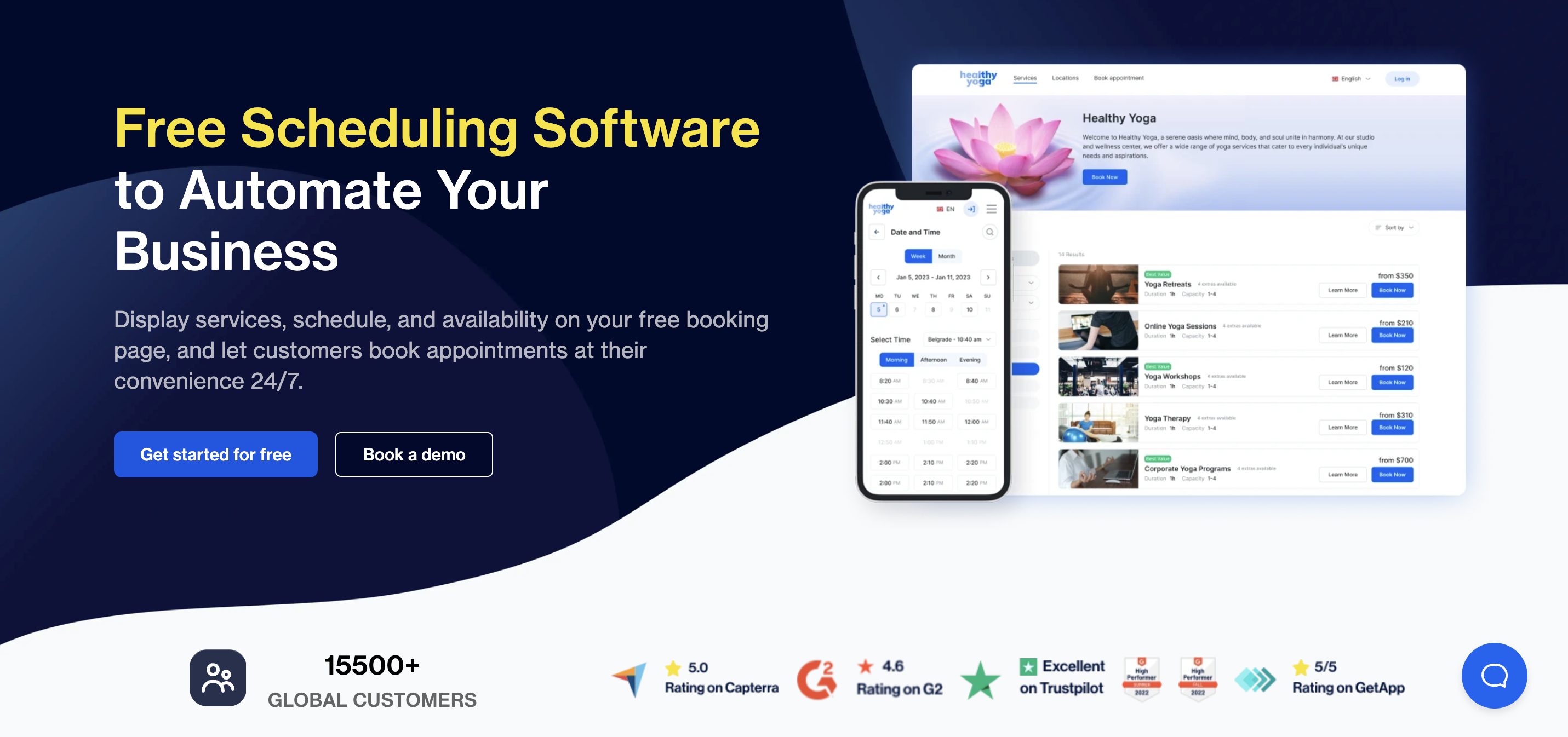
While it’s challenging to figure out which type of appointment is the most effective for your business, there is a perfect solution to automate this process and test different scheduling methods without wasting too much time. Trafft is a free appointment booking app that offers you an insightful business dashboard to analyze which types of appointments work well for you but also supports group bookings and recurring appointments, as well as gives you the flexibility you deserve.
You can take full control over your time by utilizing appointment buffer time, organizing employees' schedules, and automating the whole booking process. Customers can book an appointment in a few clicks, while you can claim back the time you usually spend on running everything smoothly.
Sign up for free and take advantage of a seamless booking experience.

